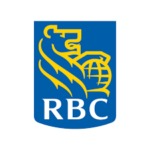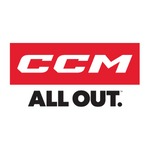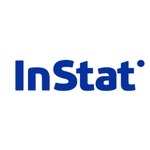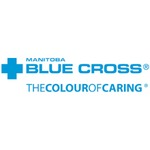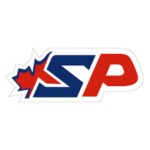NCAA Hockey is made up of 58 member schools across six conferences. The six conferences are Atlantic Hockey, CCHA, CHA, ECACHL, Hockey East and the WCHA. The member teams range as far west as Alaska and as far south as Alabama.
The College hockey season starts in October and culminates with the The Frozen Four in early April. Teams play two games per week, primarily Friday and Saturday nights, and 35 to 45 games over the course of the season.
The main task of College hockey is to prepare it’s young players for their future whether it be in the NHL or in the business world. Recent statistics have demonstrated that on average only 35 North American players in any birth year will become full-time NHL players. Eighty percent of NCAA hockey players receive a university degree. Whether you use this degree post-NHL hockey career or immediately following college, the advantage college has in preparing a hockey player for their future outside of hockey is substantial.
What is the NCAA?
The National Collegiate Athletic Association (NCAA) is a voluntary organization through which American colleges and universities govern their athletics programs. It comprises more than 1,250 institutions, conferences, organizations and individuals.
What do I need to do to compete in the NCAA?
In order to compete in the NCAA, you must graduate from high school, write the SAT or ACT, register with the NCAA Eligibility Center, meet NCAA academic standards, remain academically and athletically eligible to compete and to be admitted to an NCAA institution.
NCAA Eligibility Rules
4 years of participation eligibility; 5 years in which to use up 4 years of participation.
The NCAA considers major junior hockey to be professional and therefore renders a player ineligible for NCAA participation if the student athlete is involved in a professional team.
A student athlete is considered ineligible if:
Has one or more expense paid visits to a professional team or a visit exceeded 48 hours and any payment or compensation in connection with the visit was in excess of actual and necessary expenses. (The student athlete may stay longer at his own expense and must pay travel expenses home after 48 hours.)
Receives any compensation for participation in practice sessions with a professional team.
Enters into any contract or agreement with a professional or sports organization or takes part in any outside competition (game or scrimmage) as a representative of a professional team. (Player’s name must not be on an official score sheet.)
How many universities offer hockey programs?
There are approximately 58 Division I and 74 Division III hockey programs.
Division I is the highest level of athletic competition in the NCAA. Athletic programs at Division I universities can offer financial aid or scholarships based solely on athletic ability. Division III universities focus much more on the academic experience than on the athletic experience of the student-athlete. As such, Division III universities prohibit financial aid or scholarships based on athletic ability only.
What is the NCAA Eligibility Center?
The NCAA Eligibility Center is an agency which performs amateurism certification and determines the NCAA academic eligibility of all student-athletes wishing to compete in NCAA Division I or II athletics (Note: Division III institutions individually determine the eligibility of their incoming student-athletes.)
The NCAA Eligibility Center evaluates student courses, grades and test scores to determine whether students meet prescribed minimum academic requirements and will provide the student’s initial eligibility certification results to all universities that request this information. Any prospective student-athlete who will enroll in college and compete in NCAA Division I or Division II athletics must register with the Clearinghouse.
Initial-eligibility certification from the clearinghouse does not guarantee your admission to any Division I or II college. You must apply for college admission separately. The clearinghouse only determines whether you meet NCAA requirements as a freshman student-athlete in a Division I or II college to be able to compete, practice and receive an athletics scholarship.
What is Amateurism Certification?
Amateurism certification is a process to determine the amateur status of freshman and transfer student athletes initially enrolling at NCAA Divisions I and II member institutions. Prospects will complete an amateurism section when they register with the NCAA Initial-Eligibility Clearinghouse.
When should I register for the NCAA Eligibility Center?
If you wish to compete in the NCAA in the future, you must register with the NCAA Eligibility Center after completion of grade 11, or as soon as possible thereafter, even if you have not received an offer to attend an NCAA university. The NCAA Eligibility Cneter is a resource that a student-athlete and parents must use to ensure that the student is academically eligible and taking the best steps to reaching a NCAA scholarship opportunity.
College recruiters will know that your interested in a NCAA Scholarship if you are registered with the NCAA Eligibility Center. Use the resource and send this message to college recruiters. To participate in an “Official Visit” where a college invites you to check out the school you must have registered at the NCAA Eligibility Center, completed the SAT and forwarded your official transcript to the college.
What is an SAT exam?
The SAT (Scholastic Aptitude Test) is a standardized assessment tool used by the NCAA to determine how suitable a prospective student athlete is to a first year program at a US college or university. The SAT must be written and passed in order to be eligible for NCAA Division I and III level competition. This 3-hour exam can be written at various locations throughout the province on 6 different dates.
SAT Exam:
Mandatory Standardized test
3.20 hour exam
Test of Mathematics skills
Test of Verbal skills
Test of Creative Writing skills
2400 total marks
1800 Ivy League minimum
“sliding rule“ = the higher your GPA(average) the lower the test score required
What are athletic scholarships?
Athletic scholarships are 1-year contracts between the university and the student-athlete and are awarded based on some degree on athletic ability.
What is a “National Letter of Intent”?
National Letter of Intent (NLI) is a binding agreement between a student-athlete and an institution in which the institution agrees to provide athletics aid for one academic year in exchange for the prospect’s agreement to attend the institution for one academic year.
All colleges and universities that participate in the NLI program agree to not recruit a prospective student-athlete once he/she signs an NLI with another college or university. Therefore, a prospective student-athlete who signs an NLI should no longer receive recruiting contacts and calls and is ensured an athletics scholarship for one academic year.
The NL must be accompanied by an institutional financial aid agreement. If the student-athlete does not enroll at that institution for a full academic year, he/she may be subject to specific penalties, including loss of a season of eligibility and a mandatory residence requirement.
Who decides if I get a scholarship?
Although admissions offices can refuse the admission of any student thereby refusing any athletic scholarship, university athletic programs have considerable influence with the admission office. This allows coaches to scout and recruit players and offer scholarships to those who they want for their programs.
Does every student-athlete receive a 100% “full-scholarship”?
Typically, university hockey teams carry 22-26 players and have 18 “full-scholarships” to distribute as they see fit. Usually, of these 18 athletic scholarships some are divided into partial athletic scholarship and some remain full athletic scholarships. Most teams have some student-athletes who receive only a portion of their expenses in scholarship and some athletes who receive all their expenses in scholarship.
How is an athletic scholarship renewed?
The decision to renew a scholarship is made on a year-by-year or term-by-term basis, depending on the regulations of the institution. If you are receiving an athletic scholarship, the institution must notify you in writing on or before July 1.
What is financial aid?
Financial aid can be a grant / loans / academic scholarship from the university that is not based on athletic ability or participation on a college or university team.
What is covered by financial aid?
Financial aid can be granted for tuition and fees, room and board, books.
How do universities determine “financial need” when that is the main criteria for receiving financial aid?
Although determining “financial need” varies between universities, it is typically calculated based on the student’s savings and expected earning over the summer, as well as the parents’ overall wealth (earnings, savings, equity, investments, etc). The university makes a judgment on the amount that the student and parents are able to contribue towards a university education. Any shortfall between expected contribution and university expenses (tuition, room and board, books) is covered by financial aid.
What universities offer financial aid?
Financial aid is offered at a variety of universities. Most Division III universities offer financial aid as do many universities in Division I such as those in the Ivy League.
Academic Eligibility
Division I
If you enroll in a Division I college in 2008 or later and want to participate in athletics or receive an athletics scholarship during your first year, you must:
Graduate from high school;
Complete these 16 core courses: 4 yrs of English, 3 yrs of Math (algebra 1 or higher), 2 yrs of natural or physical science (including one year of lab science if offered by your high school), 1 extra yr of English, math or natural or physical science, 2 yrs of social science, 4 yrs of extra core courses (from any category above, or foreign language, nondoctrinal religion or philosophy);
Earn a minimum required grade-point average in your core courses; and
Earn a combined SAT or ACT sum score that matches your core-course grade-point average and test score sliding scale (for example, a 2.400 core-course grade-point average needs a 860 SAT).
Note: Computer Science courses can be used as core courses only if your high school grants graduation credit in math or natural or physical science for them and if the courses appears on your high school’s core-course list as a math or science course.
The two documents below must be referenced by a Manitoba student athlete to determine the Core Courses required in Manitoba in order to be eligible for a NCAA scholarship. The second form describes how to determine the quality points required in order to compare grade point averages and Letter grade marks from high school course results.
Division III
Division III does not use the NCAA Initial-Eligibility Clearinghouse. Contact your Division III college regarding its policies on financial aid, practice and competition.
















